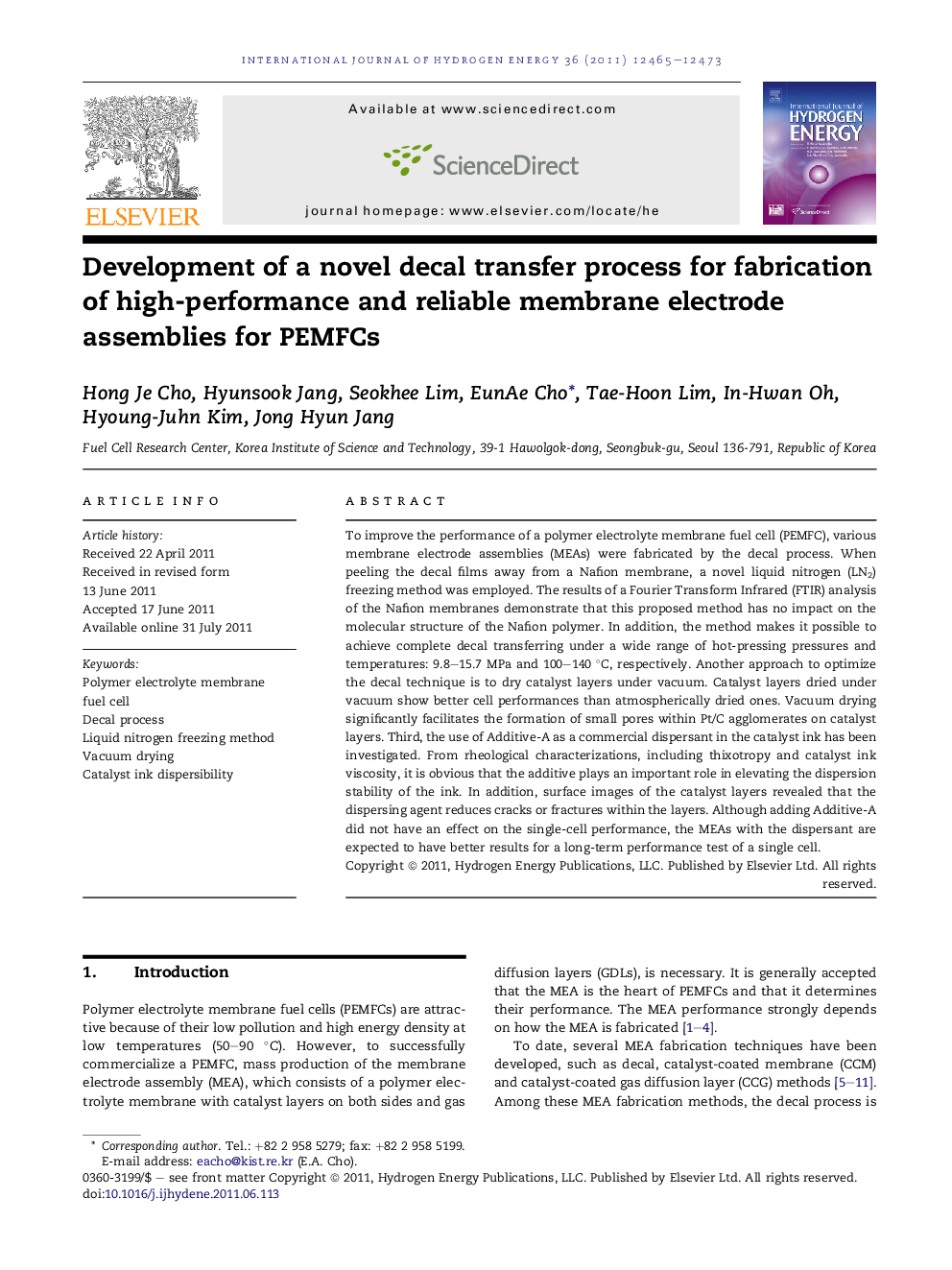| Article ID | Journal | Published Year | Pages | File Type |
|---|---|---|---|---|
| 1282450 | International Journal of Hydrogen Energy | 2011 | 9 Pages |
To improve the performance of a polymer electrolyte membrane fuel cell (PEMFC), various membrane electrode assemblies (MEAs) were fabricated by the decal process. When peeling the decal films away from a Nafion membrane, a novel liquid nitrogen (LN2) freezing method was employed. The results of a Fourier Transform Infrared (FTIR) analysis of the Nafion membranes demonstrate that this proposed method has no impact on the molecular structure of the Nafion polymer. In addition, the method makes it possible to achieve complete decal transferring under a wide range of hot-pressing pressures and temperatures: 9.8–15.7 MPa and 100–140 °C, respectively. Another approach to optimize the decal technique is to dry catalyst layers under vacuum. Catalyst layers dried under vacuum show better cell performances than atmospherically dried ones. Vacuum drying significantly facilitates the formation of small pores within Pt/C agglomerates on catalyst layers. Third, the use of Additive-A as a commercial dispersant in the catalyst ink has been investigated. From rheological characterizations, including thixotropy and catalyst ink viscosity, it is obvious that the additive plays an important role in elevating the dispersion stability of the ink. In addition, surface images of the catalyst layers revealed that the dispersing agent reduces cracks or fractures within the layers. Although adding Additive-A did not have an effect on the single-cell performance, the MEAs with the dispersant are expected to have better results for a long-term performance test of a single cell.
► The LN2 freezing method enhanced transfer yield of Pt catalyst from decal substrates to a membrane. ► Cell voltage of the vacuum-dried MEAs showed greater than 12% higher performances in comparison with the conventional atmosphere-dried ones. ► Additive-A ensured better dispersion stability of the catalyst mixture.
